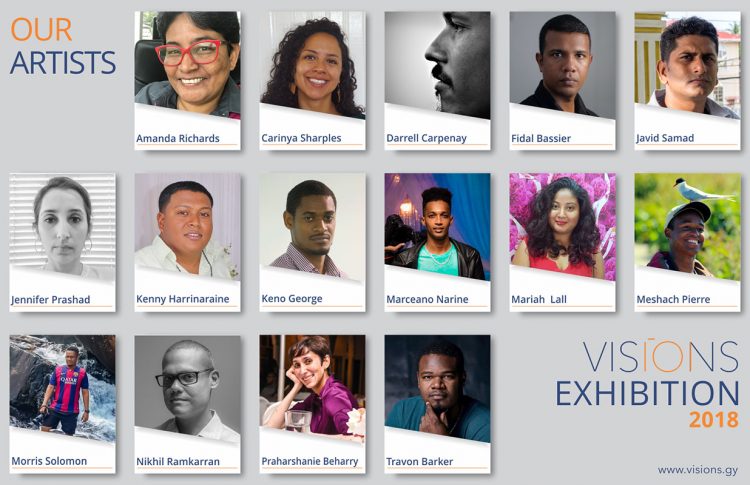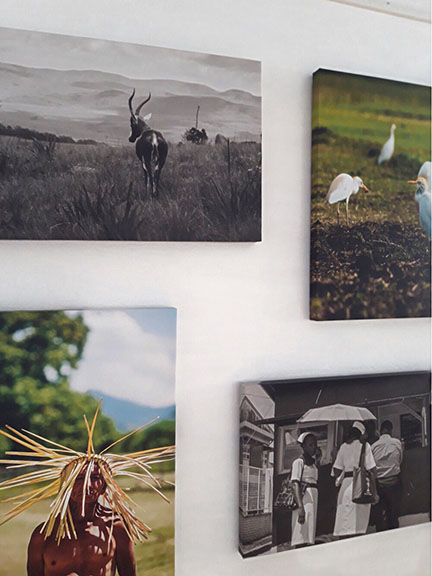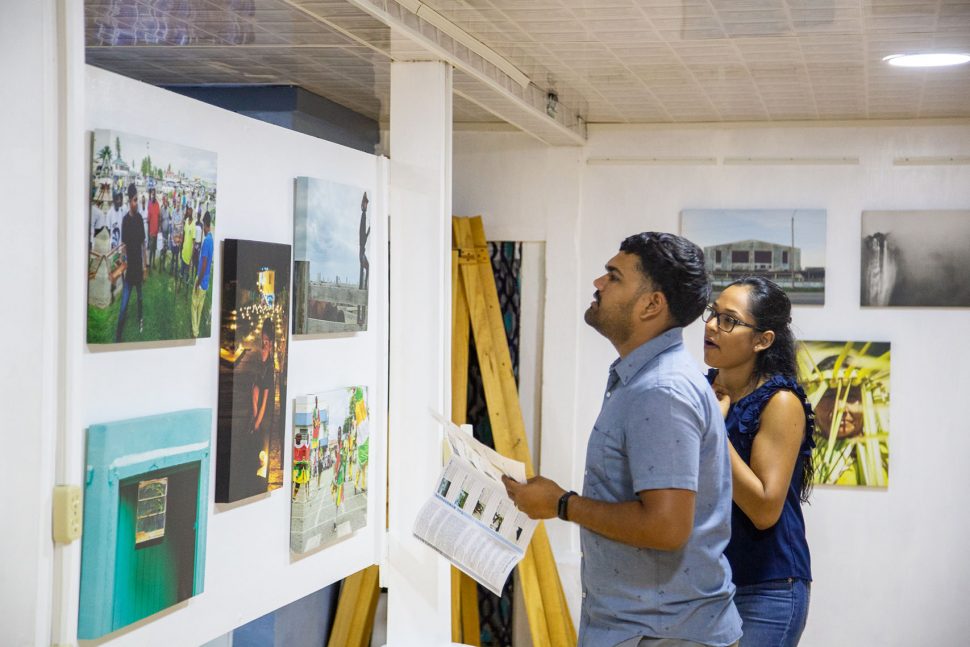One does not need formal training to appreciate the pieces on display in the VISIONS 2018 Exhibition at the Oxygen Art Gallery.
Some are immediately captivating–a frolicking young masquerade; two competing birds facing off; an Indigenous woman shrouded under traditional headwear–while in others the allure is more subtle—a flock of birds flying away from the Kaieteur Falls; or a labourer toiling away as the political powers that be duke it out behind him.
Nonetheless, regardless of their subtlety or lack thereof, each of the 30 photos on exhibit showcase the talent of Guyanese photographers, their power to evoke emotion in just a single shot, and the diverse range of subject matters available to be captured on camera.
The idea for the exhibition was born out of the deliberate choice to fill a gap. In 2016, when the Ministry of Culture’s “Capture Guyana 2016” photography competition failed to take off, a group of photographers came together to create a curated exhibition, resulting in “VISIONS 2016.”

Two years later, the exhibition’s organisers continue to make the deliberate choice to give photographers an outlet for their art, while giving the public multiple storylines through photographs.
Michael Lam, the exhibition’s organiser and a photographer himself, explained that 137 pieces were received, analysed, and a storyline was subsequently conceptualised. Lam added that it was therefore not a matter of the selected photos being “better” than those not selected but rather a matter of which photos would best tell the storyline that was developed.
Indeed, the exhibit is a showcase of the individual talents of the photographers on display but the exhibition’s organisers hope that the exhibits will be viewed as a whole, with each piece playing a part in telling the larger story.

There certainly are clear themes visible when one walks through the exhibition. In his “notes,” the exhibition’s curator, Karran Sahadeo, explained that the 30 photos were organised into six clusters: The Atmosphere; The Structures; The Stoic; The Competition; The Vibrant; and The Associated. Each piece in each cluster flows with interconnectivity and hopes to take the viewer on a journey to find the common thread.
“One of the things is to have photographers and the viewing public to think of art in a different way; that’s why we have it as a curated exhibition and not a competition,” Lam said. He continued, “It’s about looking at the photos in a storyline and how the stories stand apart and together with those in the theme.”
He also said that there so many tiny mechanisms which occurred behind the scenes to make each piece fit into the whole.
For one, the artists were asked to submit photographs that would be displayed at a size of 16×24 inches. “This is to ensure that no photo dominates the others simply because of its size. It is also to make the photographer think about what looks good at that size and tells the story best,” Lam explained.
Particularly for first time exhibitors, these tiny mechanisms better prepare them for showcasing their work to the public and VISIONS 2018 certainly has its share of new blood. The 15 selected photographers possess varying levels of experience and backgrounds; there are the more well-known names, such as Amanda Richards, Nikhil Ramkarran, and Keno George, and newer faces, such as Marceano Narine and Mariah Lall. Lam added that there were seasoned photographers even within the persons not selected, further supporting his point that the exhibition is not just who has the “best photos.”
“Photography is constantly evolving and with advances in technology, the art has increasingly become more accessible and democratic. Today, an amateur with a smartphone can take an image on par with a professional with a high end dedicated camera,” Sahadeo said in his curator’s notes. He added, “Of the participating photographers in VISIONS, three-quarters self-identify as either a hobbyist or amateur.”
Lam is hoping that the exhibition will serve as a vehicle for art appreciation in Guyana. “In school, we’re taught about the colour wheel and basic composition but we don’t learn much beyond that. So when we go to an art exhibition, we don’t know what we’re looking at. So, exposing more people to any art is a good thing,” he said.
Furthermore, he hopes that the exhibition will open persons’ eyes to all Guyana’s photography industry has to offer. “I would hope that you would see the variety of images, genres, and subject matters covered by photographers in Guyana and the level of skill some of them put into their processing. And I hope it makes you think and wonder how they did it that way and why.”
The first part of the exhibition concluded yesterday but members of the public can still see each of the 30 pieces when the exhibition continues from December 17th to December 29th at The Duke gallery and restaurant in Kingston, every day from 5pm to midnight.

